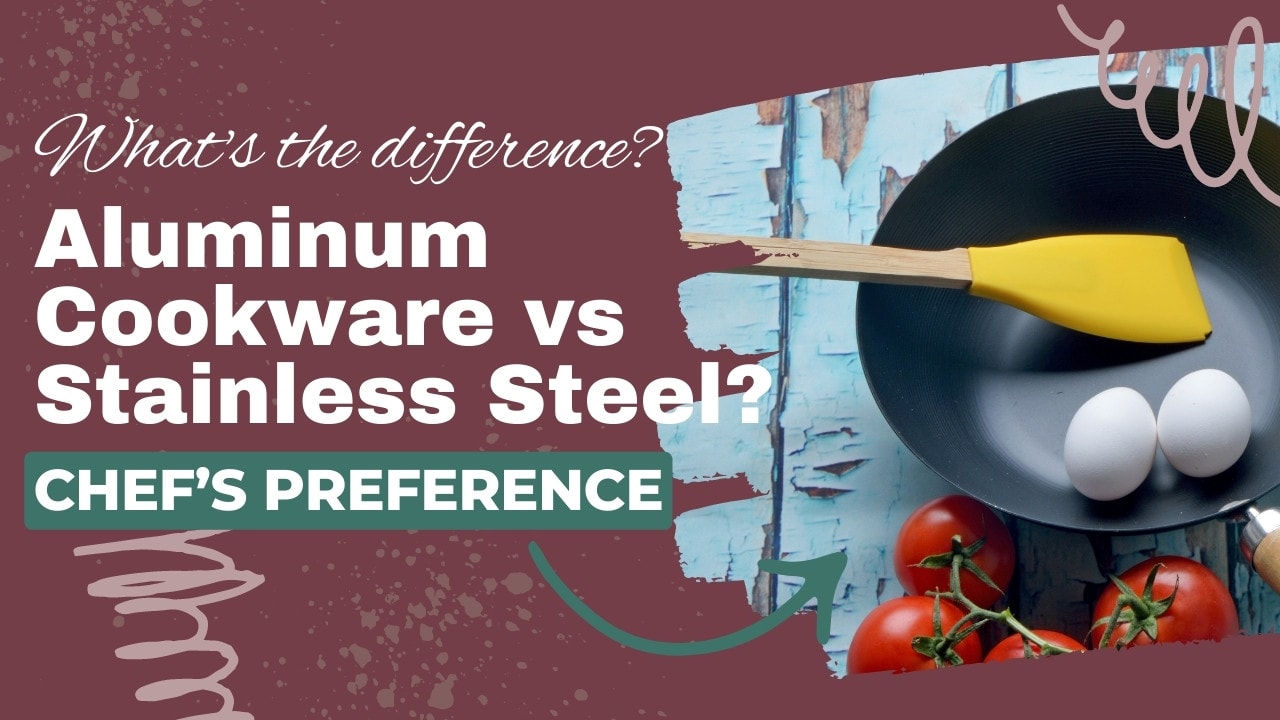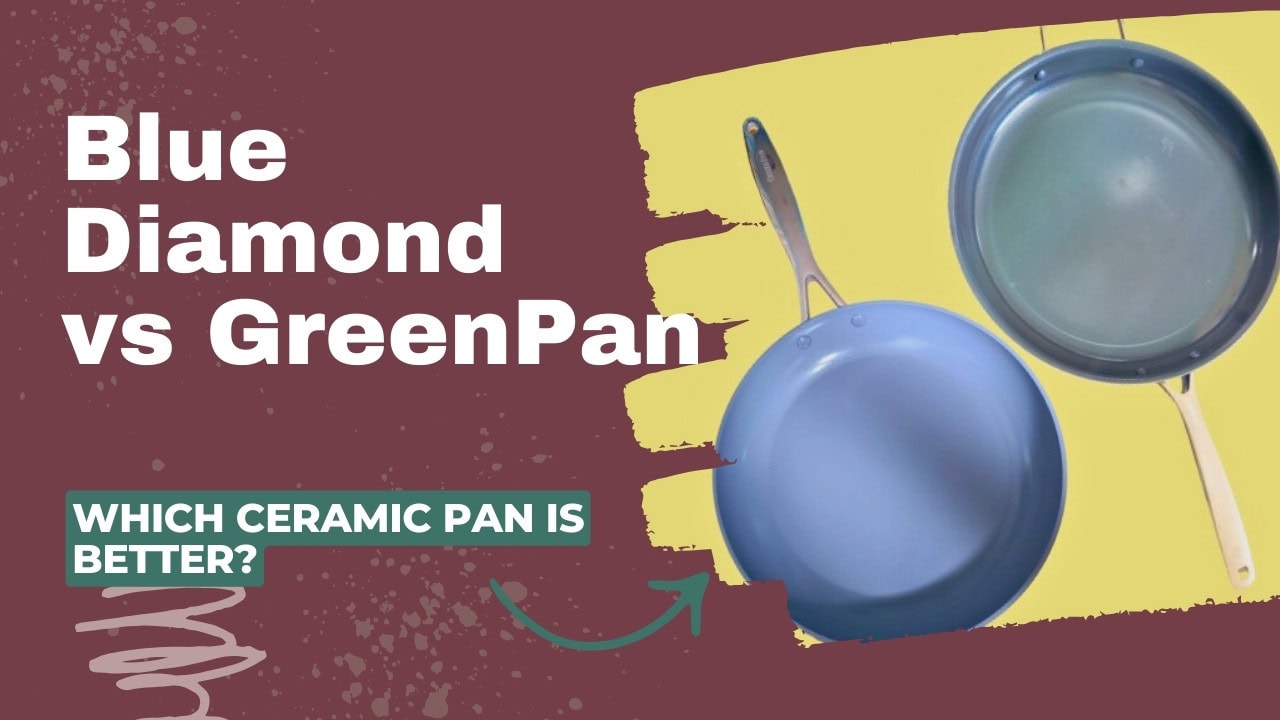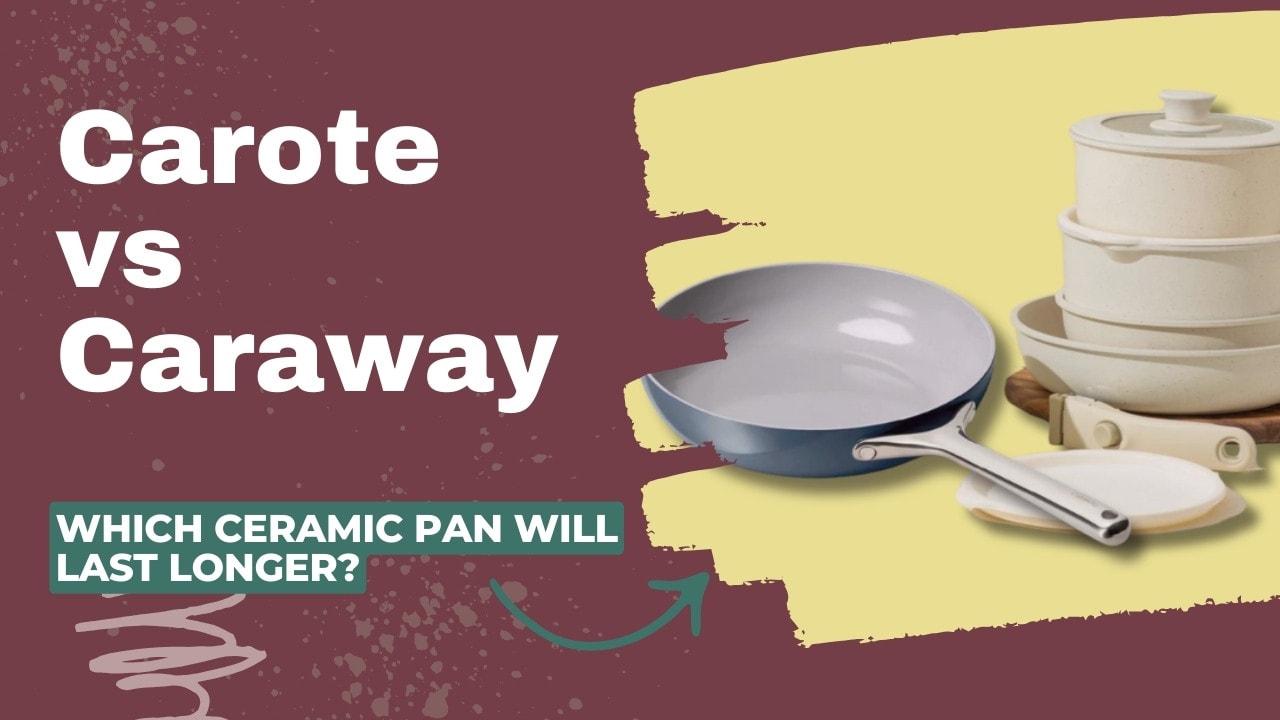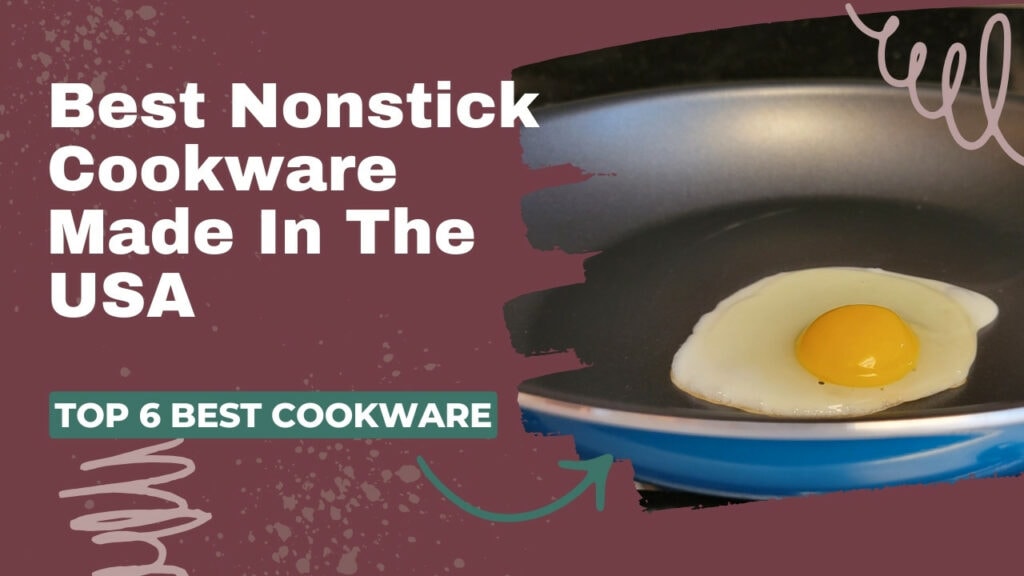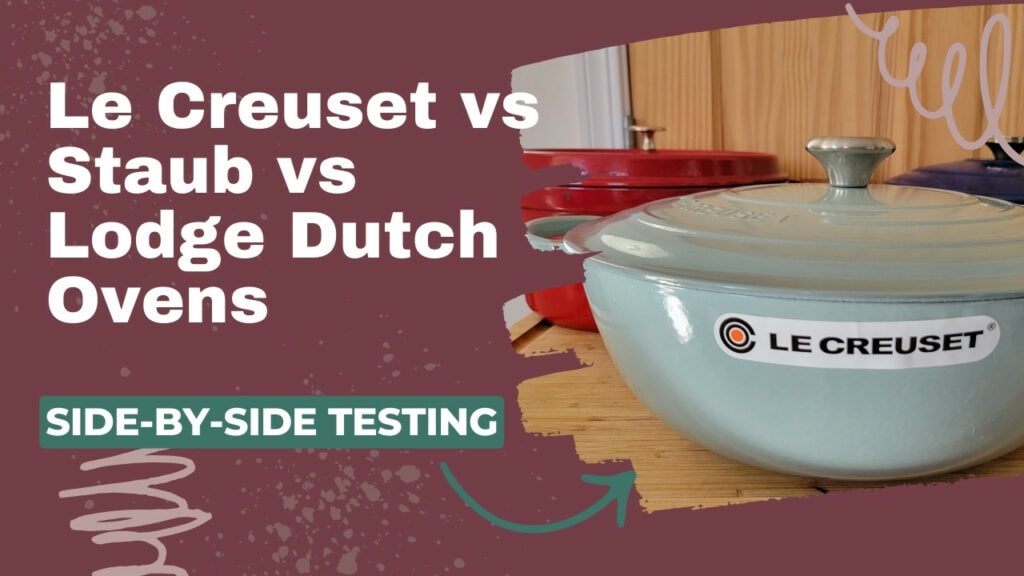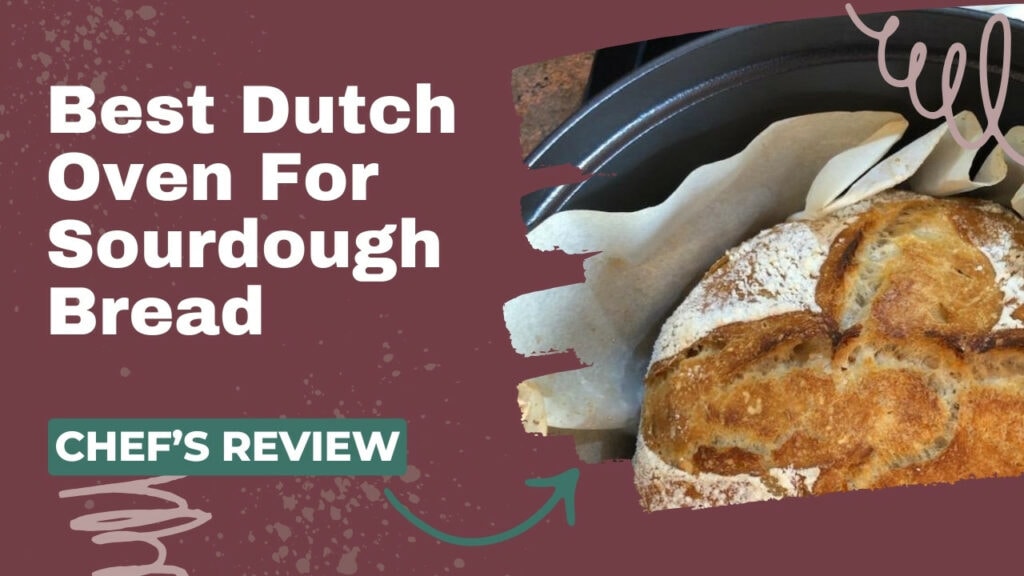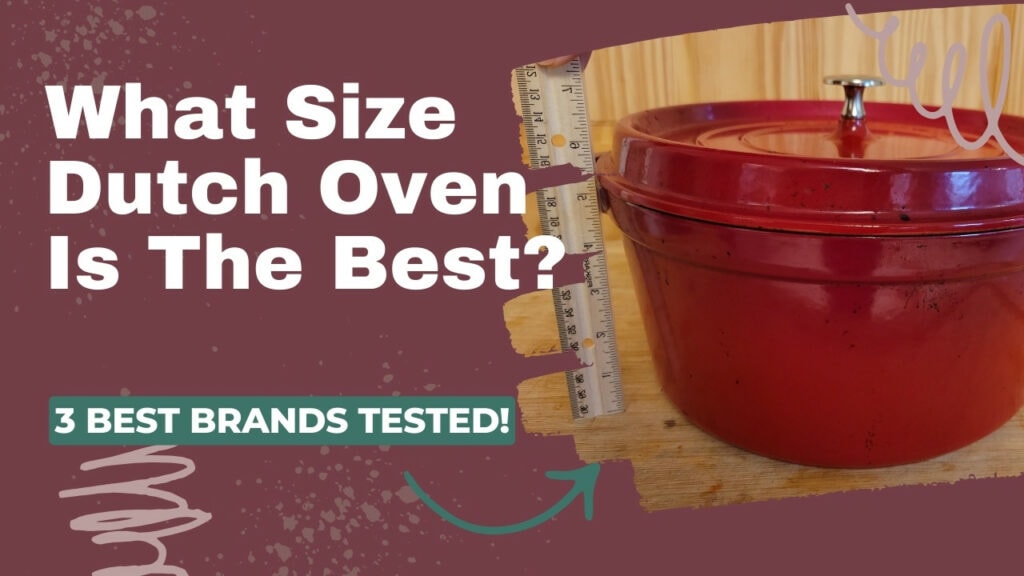Stainless steel and aluminum are two very popular cookware materials. They have their pros and cons, but out of all the cookware materials available, these are the two I would ultimately recommend to a friend because they are so efficient and easy to use.
But now that you’re in the market for a new pot or pan, you’ll need to explore a little more detail about aluminum vs. stainless steel – What’s the difference?
It’s tempting to go for the cheapest option when you’re buying cookware (hint: aluminum). But we’ll look at the properties of both aluminum and stainless steel to help you decide which is worth your money. And I’ll let you in on a little secret to get the best of both worlds.
We’ll cover:
Aluminum vs. Stainless Steel Cookware
Aluminum and stainless steel are both lightweight, quick-heating cookware materials common in everyday use. Aluminum cookware is lighter than steel and more affordable, but is less durable and needs to be washed by hand. Stainless steel is heavier, more versatile, potentially more nonstick, and will last a lifetime.
I choose to invest in clad stainless steel cookware because it combines stainless steel and aluminum to create the ideal cooking surface.
Types of Aluminum and Stainless Steel Cookware
You may think choosing between stainless steel and aluminum is just one simple decision – but as you begin shopping, you’ll find there are actually many variations on aluminum and stainless steel pans that affect their conductivity, ease of use, cleaning, and health-related properties. Let’s take a look at the different types available.
Aluminum Cookware – Your Quality Choices
When buying aluminum cookware you have a few choices:
Note: Some aluminum pots and saucepans have natural, non-anodized aluminum on the outside of the pan while the inside is hard anodized. Although they are affordable, they won’t last as long or be as versatile as fully hard anodized.
Stainless Steel Cookware
Stainless steel is a steel alloy created by combining iron with other metals, usually nickel and chromium. High-quality “18/10” cookware pans have a higher nickel content, generally over 18%.
It is rare, however, to find a stainless steel pan that is made from solid stainless steel. Steel holds heat well, but does heat up quickly or distribute it evenly.
To help with this, high-quality stainless steel pans are usually 3 or 5-ply: layers of steel with more conductive metals in between.
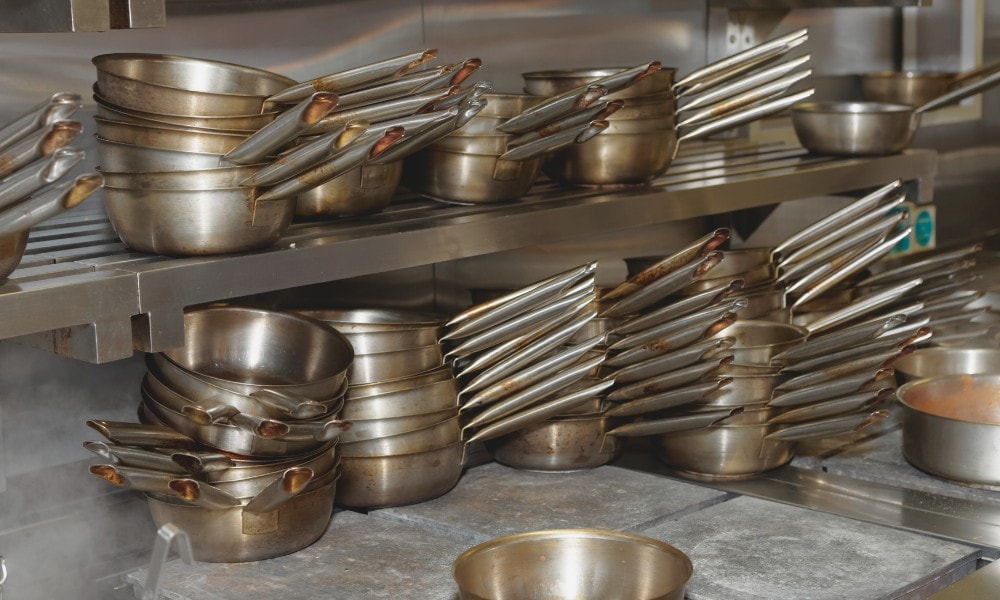
These top-of-the-market stainless steel pans harness the swift heating power of aluminum or copper to help create an evenly heated surface very quickly.
3 and 5-ply stainless pans are also known as fully clad cookware. Let’s look at this hybrid pan in more detail.
Clad and Fully-Clad Cookware
2-ply stainless steel has aluminum on the outside and stainless steel on the inside. This means that the pan will heat up quickly but the inside will be more durable, less reactive, and will hold heat better. This is also known as “impact bonded,” “clad” cookware, or “bottom-clad” – because it has a plate of aluminum at the bottom of a fully steel pan.
Fully-clad refers to cookware that consists of layers of metals sandwiched together to combine their unique qualities into a superior product that heats quickly and maintains that heat.
3-ply stainless steel pots and pans are made from two layers of steel with a layer of aluminum sandwiched between them.
Five-ply stainless steel has three layers of aluminum and costs slightly more. This way you can have all the conveniences of stainless steel while also benefiting from the fast heating properties of aluminum. These pans are dishwasher-safe, which makes them much easier to clean than regular aluminum pans.
Many of these products are labeled as stainless steel when, in fact, they’re a combination of aluminum and stainless steel.
Some aluminum pots on the market use stainless steel to make them suitable for induction. These aluminum pots have a ring of stainless steel set into the base that will activate the induction cooker and transfer the heat into the aluminum. They are not technically clad, but use this principle to make the pan more adaptable.
How Aluminum and Stainless Steel Compare
Alright, I have given you a very brief description of how aluminum and stainless steel compare, but we need to dive into the details for you to truly decide which of these materials you want to spend your money on.
| Stainless Steel | Aluminum | |
|---|---|---|
| Heating | Slow heating | Fast heating |
| Cost | More expensive | Cheaper |
| Upkeep | Dishwasher safe | Hand Wash only |
| Weight | 2-4 pounds | 1 pound or less |
| Oven Safe | Yes | Yes |
| Searing | Very effective | Not effective |
Here is how they compare in the most important categories:
Heating
As I’ve mentioned, aluminum is a very good conductor of heat. This has its pros and cons. It heats up fast, but can lose this heat just as quickly. When you add your ingredients, the pan will cool, and you’ll need to heat it up again.
Stainless steel holds onto heat much more easily and will not cool down when you add your ingredients. This makes it ideal for searing as you need that even, high heat on contact with the meat. That said, I love aluminum for when I need to be very precise with my temperature control as it fluctuates so smoothly.
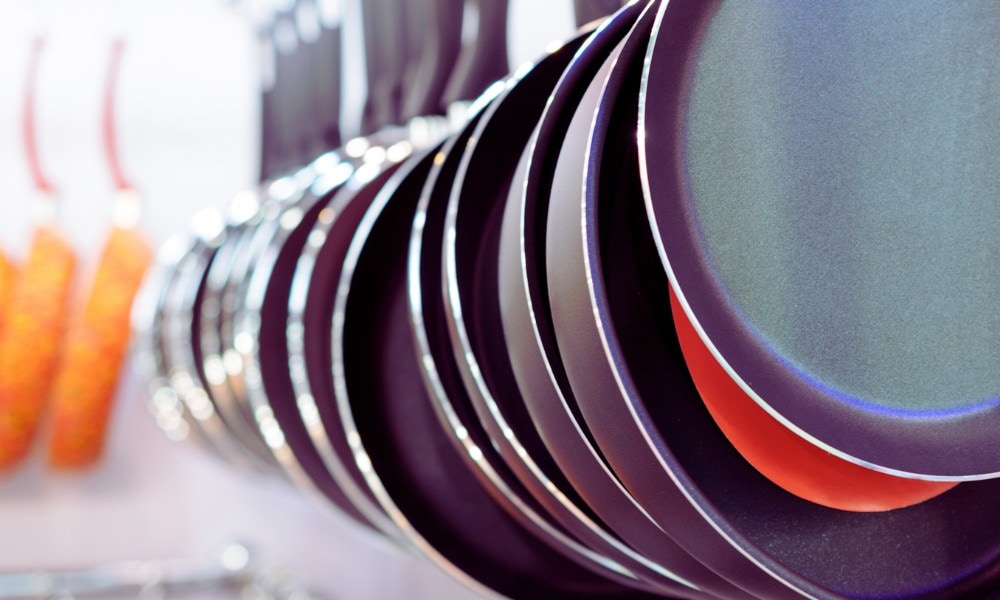
Both stainless steel and aluminum heat very evenly. Hot spots in your cookware results in uneven cooking, burning, and irregular browning. Thankfully, that’s not something you need to worry about with aluminum or stainless steel pans.
Ease of Use
Both aluminum and stainless steel pans are quite easy to work with, especially if your aluminum is hard-anodized and non-stick.
Versatility
Since stainless steel cookware is non-reactive, you can use it for just about anything at any temperature. I love to grab my stainless steel pan out of the cupboard and not have to consider whether it is suitable for the task I need it for! Aluminum is less versatile due to its reactive qualities, which I will discuss in a minute.
Both of these materials are totally safe to use in the oven as long as the handles are not plastic. But if you are using the oven for the reverse sear method for meat, I suggest using a stainless steel skillet because it holds its heat better when the meat is added to the pan.
Apart from hard searing, I see very little difference in the versatility of these pans if you are using at least a three-ply stainless steel pan and a non-stick, hard anodized aluminum pan – neither of which are actually pure stainless steel or pure aluminum! (Oh, marketing language. It’ll get you every time.)
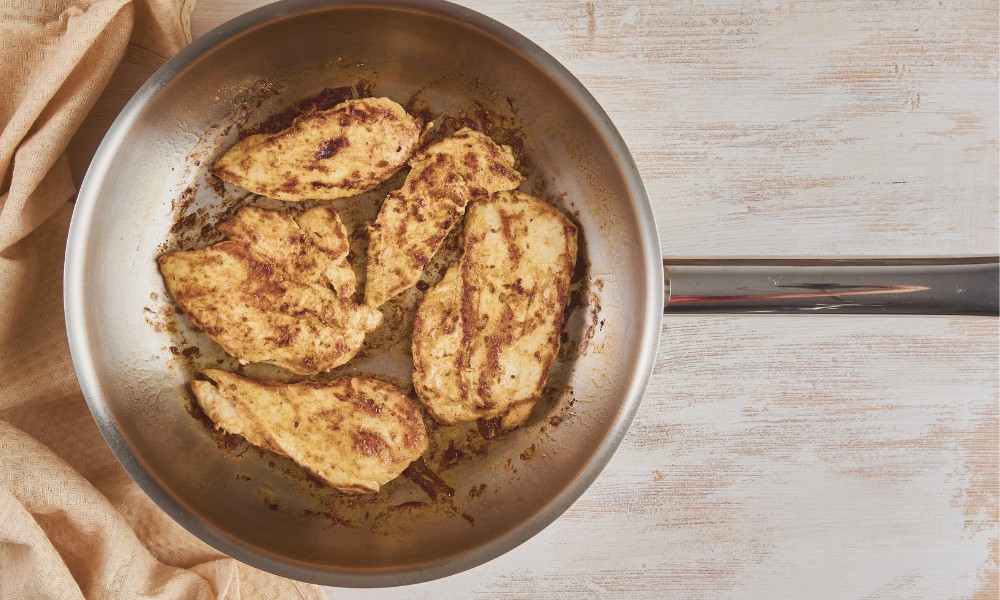
Health Concerns
Even though most stainless-steel pans contain aluminum layers, most companies have moved away from using aluminum in their product names because of health concerns associated with aluminum.
As Mike over at the Youtube channel Dine Company, points out in the video below, aluminum is reactive to acidic foods like lemon juice and tomatoes. This means that if you’re using natural aluminum pans, they can leach aluminum into acidic food.
Is ingesting some aluminum harmful? Doctors have mixed opinions on this. According to the Agency for Toxic Substances and Disease Registry (ATSDR), aluminum cannot be absorbed through the skin, and only 0.01–5% of ingested aluminum is absorbed by the body, some studies have attempted to link aluminum with Alzheimer’s disease or dementia, but, according to the UK’s Alzheimer’s Society, no convincing link exists.
Either way, you only need to worry about aluminum getting into your food if you are using non-anodized pans. Coated or treated aluminum pans do not react with acidic foods as much if at all, although there are health concerns associated with some of the polymer-based nonstick coatings used on aluminum pans.
Is Stainless Steel Safe to Cook With?
Stainless steel is deemed to be safe to cook with by the National Sanitation Federation (NSF) if it contains at least 16% chromium. Most stainless steel used as cookware does, but it never hurts to check the label!
When stainless steel a pan is new it will leach a small amount of chromium and nickel into food. But, according to this widely-cited study in J Agric Food Chem, this metal leaching significantly decreased after the sixth cooking cycle of tomato sauce in stainless steel pans.
Cleaning
A huge angle to consider when buying pots and pans is how easy they are to wash. I so rarely have energy to scrub my pans after cooking a full meal and eating it with my family.
Stainless steel cookware is dishwasher-safe so you can leave most of the hard work up to your trusty appliance. Non-reactive aluminum is not dishwasher safe, which means you’ll need to wash it by hand.
Hard-anodized aluminum may claim that it’s dishwasher-safe, but if you put aluminum in the dishwasher, it can darken the metals and even cause corrosion over time. This is where three and five-ply stainless steel really comes in handy because it features aluminum on the inside only, which means they’re still dishwasher safe.
Both of these materials can be hand washed in hot soapy water with a soft sponge. A stainless steel pan is more likely to discolor if you burn something, even when you scrub it. You can use a soft scour on stainless steel and hard anodized aluminum, but be very gentle on aluminum pans with non-stick coating.
That being said, non-stick aluminum pans are a breeze to clean with hardly any bits sticking to the surface – at least while the coating is new and well-cared for.
In my opinion, the ideal situation is saving to buy three or five-ply stainless steel pans that have the heating quality of aluminum but the ease of cleaning that comes with stainless steel.
Price
Both aluminum and stainless steel pots and pans have large price ranges so you can choose the one to fit your budget. But if you compare a top-of-the-line set of aluminum pots and pans against stainless steel, aluminum will always be cheaper.
Don’t forget to consider a pan’s longevity when making a cookware purchase. The initial investment in a set of stainless steel cookware might sting, but they will last you a lifetime if you maintain them. Aluminum, in comparison, has a much shorter lifespan. It’s subject to wear and tear, cracked coating, and dings and dents, so you will need to replace it in the long run.
If you’re on a tight budget and aluminum is your only option, I think it will serve you well. It’s lightweight and can be used for many different cooking techniques, from sauteeing to frying. You just need to go into your purchase knowing the material’s limitations.
Conclusion
Hard anodized aluminum might be a good choice on a budget or for cookware you don’t use very often, but at the end of the day, combining stainless steel and aluminum will always create a better pan.

